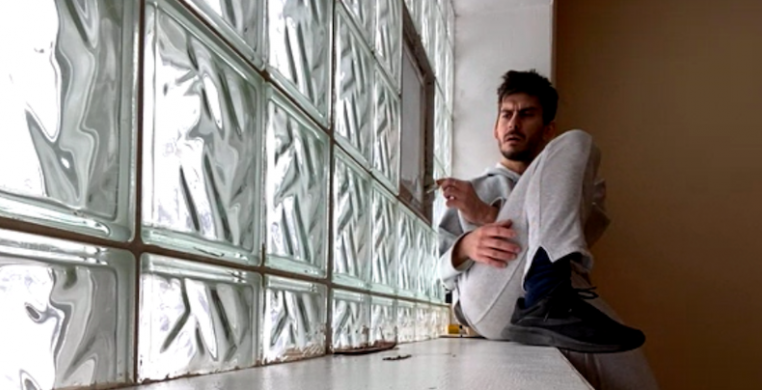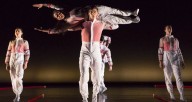On March 7, Hedwig Dances premiered their first performance of 2021, with an international collaboration between choreographer Ana Beatriz Perez, based in Spain and a sound score by Spanish music artists Maria Move and Raúl Grillo. “Home: A Place Within” explored common themes of safety, isolation and instability within the dancers’ homes and within themselves. For 40 minutes, the dancers invited us into very tactile moments in their homes—on the walls, windows, furniture—as they explored Perez’ fluid and nuanced choreography blended with their own improvisations.
While I wasn’t excited about seeing another performance built around the vague theme of home this far into the pandemic, I was impressed with the overall quality with which the work was executed. This is largely due to technical director Jacob Snodgrass, who flawlessly managed the livestream. There were seamless transitions between scenes as the screen shifted between one camera to multiple cameras, between layered, faded images to a close up of a dancer’s face stacked three times. I didn’t even know the dancing was happening live until the Q&A after the performance. The sound score—a blend of spoken phrases by the dancers and original composition by Move, compiled by Grillo—also drove my experience of the work, framing the different episodes that took place as the work moved from room to room, from dancer to dancer, from contemplative whispers to quirky plant dances, from wailing window slumps to chaotic pink and purple crossfades.
It’s a hard balance when creating digitally to navigate how much sensory stimulation is too much, and I appreciate Snodgrass, Perez and the other collaborators for taking a risk. That said, I felt distracted by all the elements involved in the performance and I couldn’t fully resonate with the work. Between the opening and closing collages of outdoor scenery, the continually changing musical compositions, the abundance of quick-paced and detailed choreography, the visual editing of the video layouts and the spoken text by the artists, there was a lot to focus on. I found myself questioning the intent behind using all of these resources for a predictable exploration of our home spaces. A year after we initially retreated into our homes and began making dances in these confined spaces, is there something more profound or more unique to be discovered than merely the contemplative headspaces of artists trapped indoors?
Regardless, there were many beautiful moments: Rigoberto Fernandez Saura tipping sideways over a spinny barstool, head on the floor, legs splayed in the air as he walked himself around in a circle. Jacob Buerger sitting on a windowsill playing with a lamp. Olivia Gonzalez in a rond de jambe backwards that smoothly guided her into a sitting position on the windowsill behind her. With the performers recording themselves from their homes, there weren’t many opportunities for curated close-up shots, yet the creativity of the film angles drew me into the different environments. At one point, Buerger shifted his camera so that it was directed towards a mirror in his living room. We saw only his reflection moving in the mirror until he started to step into and away from the mirror, dancing with his reflection. Then as he shifted to a chair at the visible kitchen table behind the mirror, an image of Jessie Gutierrez faded into the mirror space. In a perfectly timed moment, Buerger and Gutierrez both drummed the fingers on one hand before the scene shifted to focus on Gutierrez.
In that moment, I couldn’t take my eyes away from the screen: Gutierrez in a dim room wearing a white theatrical mask. Projected lights that mimicked the soft reflection of water swayed across the floor as she slowly shifted to a low and sweet acapella rendition of Bill Withers' song, “Ain’t No Sunshine.” As she lowered the mask and pushed it towards the camera, we realized that she was the one singing, in what became a juicy and intimate moment. Just us and Gutierrez, almost like we were there in the room with her.
It was those moments of magic that reminded me of how worthwhile virtual art is when collaboration is involved—with international artists who wouldn’t normally be available to us, with innovative media experts and with the dancers. It’s clear that “Home: A Place Within” would not have held the same meaning if Perez had not been so in tune to the dancers and their individual approaches to movement.


